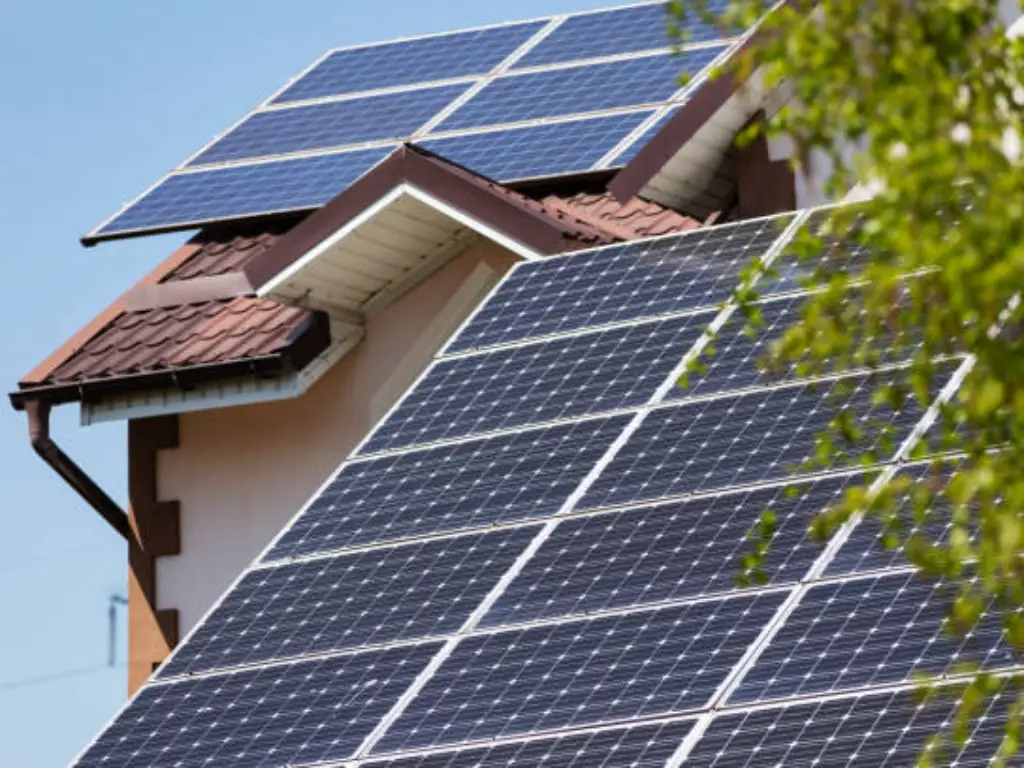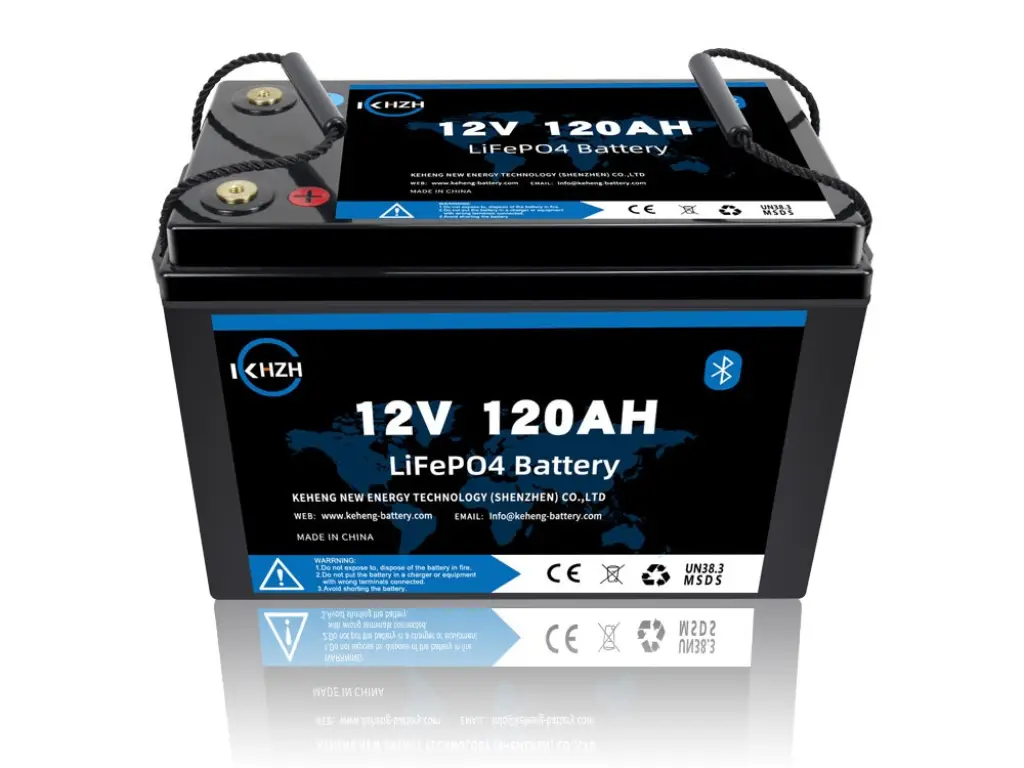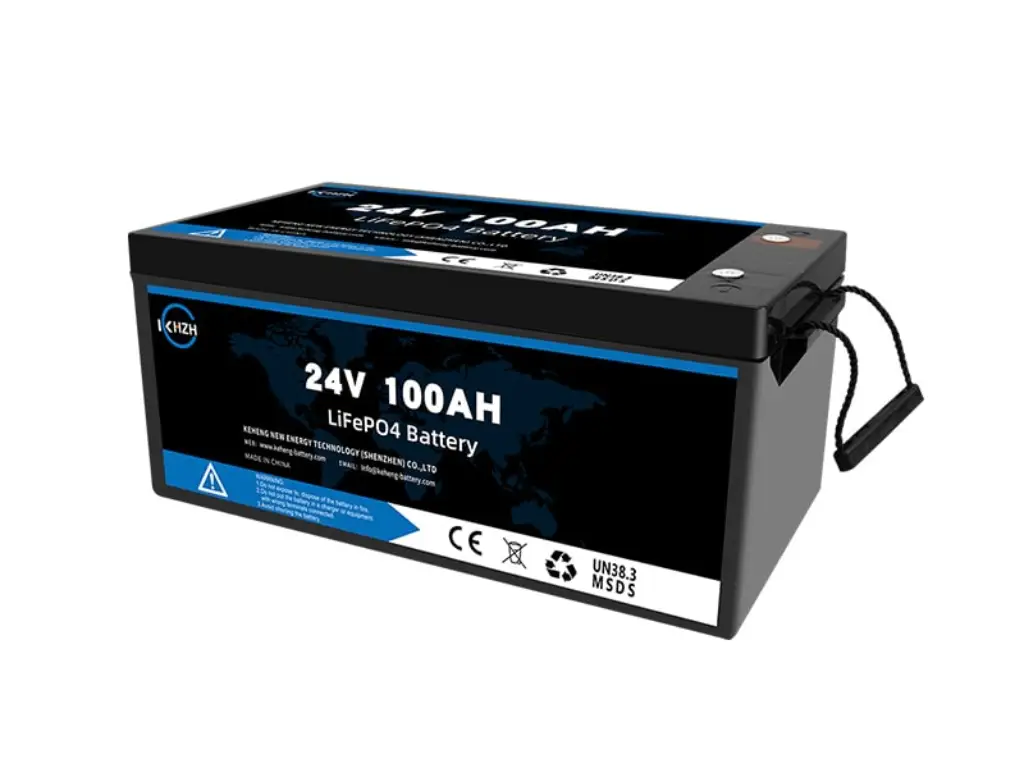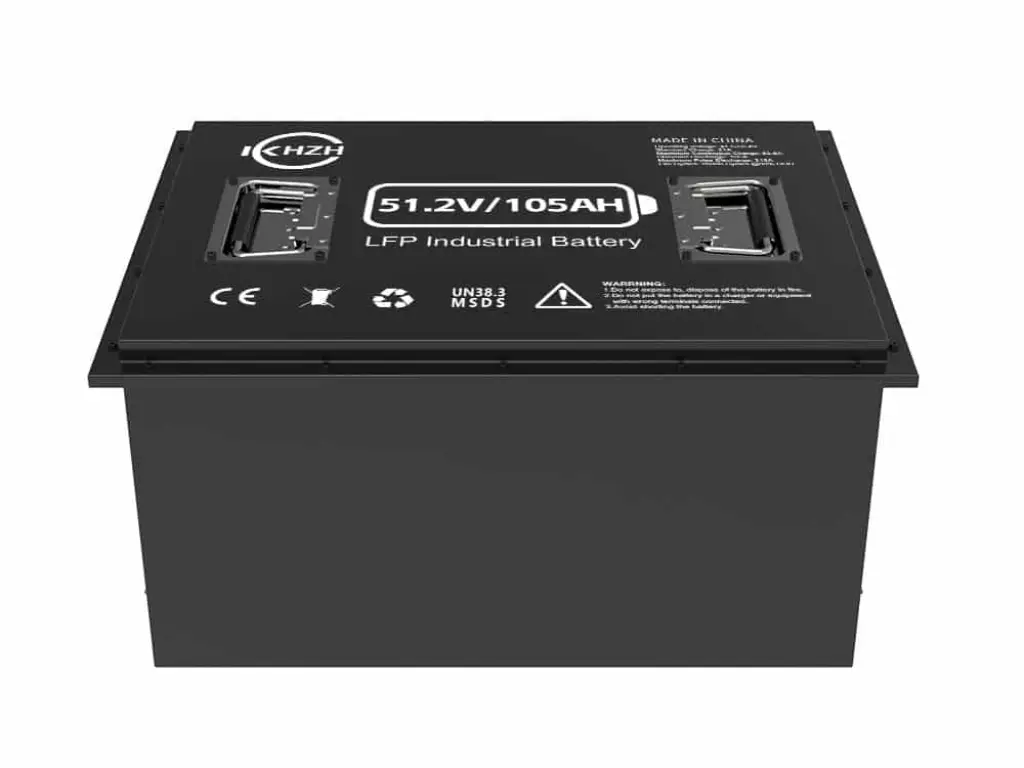Unveiling 2023’s Best Deep Cycle Battery for Solar

In the quest for sustainable and reliable energy solutions, the selection of a deep cycle battery for solar energy storage emerges as a crucial decision, one that parallels the careful selection of a core component in a sophisticated machine. The efficiency, longevity, and overall performance of a solar system hinge on the type of battery chosen. This article delves into the key factors to consider when selecting a deep cycle battery for your solar setup, offering insights into battery capacity and depth of discharge, life expectancy, installation requirements, cost considerations, and a comprehensive comparison of different types of solar batteries.
Key Factors to Consider When Selecting the Best Solar Batteries
Battery Capacity and Depth of Discharge
When selecting a battery for your solar panel system, envision the process as akin to choosing a robust backpack for an extended trek. The key is to find a balance between ample usable capacity (akin to the spaciousness of a backpack) and optimal Depth of Discharge (DoD), akin to understanding the usable portion of your backpack’s volume without accelerating wear and tear.
Battery capacity, quantified in ampere hours (Ah), mirrors the volumetric capacity of your backpack. The greater the ampere-hour rating, the more total amount of energy the battery can store, which is pivotal during periods when solar input is low. This ensures your system maintains a seamless operation even when sunlight is scarce.
Delving into DoD, imagine a reservoir of water. The DoD represents how much of this reservoir you can use before it becomes prudent to replenish it. A battery with an 80% DoD allows you to utilize up to 80% of its stored energy without detrimentally impacting its lifespan. Batteries boasting a higher DoD resemble more resilient backpacks, capable of enduring frequent usage while maintaining their integrity.
Grasping both the capacity (the total energy storage potential) and the efficient usage (DoD) of your battery is vital. This knowledge enables you to strike a harmonious balance, ensuring your solar system has sufficient power when required and that your battery sustains its functionality over an extended period.
Battery Life Expectancy
Navigating the Durability of Solar Batteries The concept of ‘life expectancy’ in batteries is akin to the varied lifespans of different animal species. This is quantified in terms of cycle life, a metric denoting the number of complete charge and discharge cycles a battery can undergo before its efficiency diminishes.
Envision a rechargeable battery as a high-grade, refillable water container. Each refill and utilization represent a single cycle. Analogous to a container that gradually loses its capacity to hold water, batteries experience a similar decline. A battery boasting an extended cycle life is comparable to a premium, durable water container, offering prolonged utility and reducing the frequency of replacement, a substantial benefit for solar power systems.
Several factors influence the longevity of a solar battery. Primarily, the battery’s chemistry plays a pivotal role. Consider the analogy of selecting between a robust, long-lived turtle and a more ephemeral fish; lithium-ion batteries, reminiscent of turtles, generally exhibit greater endurance compared to lead-acid batteries, which parallel the shorter lifespan of fish.
Usage patterns are also crucial. Intensive discharge and recharge cycles can be likened to subjecting a water container to extreme conditions regularly, accelerating wear. Lastly, environmental conditions significantly impact battery life. Similar to how a pet thrives in a conducive environment, batteries require optimal conditions; extreme temperatures can markedly shorten their lifespan.
Related Post: Battery Longevity Secrets: How Long Do Lithium Batteries Last?
Installation and Compatibility

Envision the integration of deep cycle batteries into your solar installations as orchestrating a harmonious symphony. It’s imperative that each component synergizes seamlessly to optimize performance. This entails a meticulous verification process, ensuring the battery and solar panels are congruent, akin to ensuring the compatibility of a charger with its respective device.
Initially, one must align the battery’s voltage with that of the solar panels. Picture this as choreographing a ballet duo – their movements must be in perfect harmony for an exquisite performance. Similarly, your battery and solar panels must operate in unison, sharing a voltage ‘cadence’ for optimal functionality.
Subsequently, the battery’s capacity to manage the influx of energy from the panels warrants consideration. This resembles choosing a mailbox of appropriate dimensions for your daily post. An undersized mailbox overflows, while an oversized one is inefficient. The battery should be precisely calibrated to accommodate the energy output from your solar panels.
Regarding installation, think of it as curating a new space within your domicile. Necessary considerations include ample space, efficient ventilation, and a stable temperature. These factors are pivotal in maintaining the battery’s integrity, analogous to ensuring a room maintains a comfortable climate and receives sufficient ventilation. Adhering to these principles not only bolsters the efficiency of your battery but also prolongs its lifespan, thereby enhancing the reliability and efficacy of your solar energy system.
Deep Cycle Battery Cost
Deep cycle batteries, integral to the efficiency and longevity of solar systems, can represent a significant financial investment. Initially, lead-acid batteries may present themselves as the more economically appealing option, typically priced between $100 to $200 per kilowatt-hour (kWh) of battery storage capacity.
However, lead-acid batteries often come with a relatively abbreviated lifespan, generally ranging from 3 to 5 years. Additionally, they necessitate more frequent maintenance, which accrues additional expenses in both time and financial resources. This can be likened to investing in a less expensive appliance that demands regular repairs. Over an extended period, such as a decade, the cumulative costs of replacing and maintaining a lead-acid battery system could feasibly surpass double the initial outlay.
Conversely, lithium-ion batteries, while carrying a heftier initial price tag—approximately $300 to $500 per kWh—manifest their value in the long term. These batteries are celebrated for their extended lifespan, typically spanning 10 to 15 years, and their markedly reduced maintenance requirements. This translates into a scenario where, over a decade, the initial investment in a lithium-ion battery system could ultimately yield a lower total cost of ownership compared to the recurrent expenses associated with lead-acid batteries.
To contextualize this, over a 10-year horizon, one may find themselves purchasing and upkeeping multiple lead-acid batteries, whereas a singular lithium-ion battery could remain functional with minimal supplementary costs. This illustrates the adage “you get what you pay for,” where the initial higher investment in lithium-ion batteries potentially emerges as a more economically prudent decision in the long-term analysis.
Comparing Types of Deep Cycle Batteries: Lead-Acid vs. Lithium-Ion vs. Others
Selecting the best batteries for your solar energy system can be equated to navigating the diverse landscape of automotive choices, each with unique characteristics and benefits. In the realm of solar batteries, lead-acid and lithium-ion are predominant, each offering distinct advantages and limitations. Let’s dissect these options, supplementing our discussion with a comparison table for enhanced clarity.
Lead Acid Batteries
Inaugurated in 1859, lead-acid batteries are a cornerstone in the realm of electrochemical energy storage, acclaimed for their cost-efficiency and proven dependability. Among the prevalent variations, the Absorbent Glass Mat (AGM) and gel batteries are particularly noteworthy. AGM batteries are distinguished by their superior charge acceptance and enhanced resistance to mechanical vibrations, typically offering an energy density ranging from 30-50 Wh/kg and boasting a lifespan of approximately 4 to 7 years. Conversely, gel batteries are esteemed for their exemplary deep discharge capabilities and extended longevity, albeit possessing a marginally lower energy density relative to their AGM counterparts.
Notwithstanding their ubiquitous application, lead-acid batteries exhibit several limitations. Their heft, evidenced by a specific energy of approximately 30–40 Wh/kg, is markedly inferior to contemporary battery technologies. Their durability, generally spanning 500-1000 charge cycles, is somewhat truncated when juxtaposed with newer alternatives. Furthermore, their charge efficiency, hovering around 70-85%, is less than optimal. The necessity for routine maintenance, particularly the water replenishment in flooded variants, coupled with their environmental implications due to the utilization of lead and acid, further detracts from their appeal.
Lithium-Ion Batteries
Epitomizing the vanguard of battery technology, lithium-ion batteries boast a higher energy density typically in the range of 150-200 Wh/kg, thereby eclipsing the efficiency of lead-acid batteries. Their longevity is markedly superior, with numerous models enduring over 1000 charge cycles, some even surpassing 2000 cycles under optimal conditions.
A prominent subset, the lithium iron phosphate (LiFePO4) battery, manifests an energy density of about 90-120 Wh/kg. These batteries are particularly lauded in solar energy systems for their prolonged lifespan (reaching up to 2000-5000 cycles), stability, and safety credentials. Their consistent performance across diverse temperature ranges, coupled with their enhanced environmental compatibility compared to traditional lithium-ion variants, renders them particularly advantageous.
Related Post: Top 10 Lithium Battery Suppliers in Worldwild
Other Types (NiCd and NiMH)
NiCd batteries, with an energy density hovering around 40-60 Wh/kg, once enjoyed popularity owing to their consistent power delivery and resilience over numerous charge cycles (up to 2000 cycles). Nevertheless, their appeal has waned due to concerns regarding toxic cadmium content and memory effect complications.
In contrast, NiMH batteries offer a heightened energy density (approximately 60-120 Wh/kg) over NiCd and are more environmentally benign. They typically endure about 500-1000 charge cycles. Both NiCd and NiMH batteries find utility in scenarios where weight considerations are secondary and high discharge rates are imperative.
Let’s consolidate these battery types insights into a comparison table for a clearer overview:
| Feature | Lead-Acid | Lithium-Ion | Others (NiCd, NiMH) |
| Cost | Lower upfront | Higher upfront | Varies, often higher |
| Weight | Heavier | Lighter | Moderate |
| Energy Density | Lower (less power storage) | Higher (more power storage) | Moderate |
| Lifespan | Shorter | Longer | Varies |
| Maintenance | More required | Less required | Moderate |
| Temperature Tolerance | Lower | Higher | Moderate |
What is the Best Deep Cycle Battery for Solar Energy Storage?
Given the diverse types of solar batteries, the standout merits of Lithium Iron Phosphate (LiFePO4) batteries come into sharp focus. This type of solar battery is like a heavy-duty, reliable tool in a skilled worker’s toolbox, excelling in both efficiency and dependability, are really the best deep cycle battery for solar energy storage. Their compact size means they pack a significant energy punch without taking up too much space – perfect for both cozy home setups and larger, more ambitious projects.
So, why are LiFePO4 batteries often the go-to choice? Their impressive lifespan is a key differentiator. Imagine a trusty gadget that keeps on going, year after year – that’s the kind of endurance these batteries offer. They outlast traditional alternatives and require less maintenance, making them a wise investment over the long haul, even if they might be a bit pricier upfront.
Another aspect where LiFePO4 batteries excel is their environmental footprint. They steer clear of harmful metals like lead and cadmium, positioning them as a more environmentally-friendly option.
When you weigh them against advanced lead-acid batteries, such as AGM or gel types, there’s a notable difference. While the latter might be more wallet-friendly and work fine in stable conditions, LiFePO4 batteries take the lead in terms of longevity and efficiency. LiFePO4 batteries stand out as the premier choice due to their robustness, eco-friendliness, and compact design. These advantages not only make them ideal for a range of applications but also pique interest in their specific offerings in the market.
Review of the Best LiFePO4 Deep Cycle Batteries for Solar
Keheng’s advanced LiFePO4 deep cycle batteries are distinguished by their exceptional robustness and highly efficient multiple recharge cycles, attributes that are paramount in effectively navigating the inherent variability of solar energy. These batteries incorporate sophisticated Battery Management Systems (BMS), meticulously engineered to optimize performance and ensure utmost safety, thereby bolstering user trust and reliability. Designed to cater to a broad spectrum of applications, these batteries are eminently suitable for both residential and commercial settings. Their notable durability, superior efficiency, and remarkable versatility render them indispensable components in a diverse array of energy systems.
For homeowners, these batteries offer more than energy storage. They integrate seamlessly into your lifestyle, fitting effortlessly into home solar systems. Occupying minimal space, requiring nominal maintenance, and delivering superior performance, they stand as a prudent choice for long-term energy solutions.
Keheng 12V 120Ah LiFePO4 Battery Pack

This innovative LiFePO4 battery, boasting a laudable 120Ah capacity, emerges as the exemplary solution for smaller solar configurations. Its unique self-heating feature, particularly beneficial in colder environments, guarantees consistent performance under frigid conditions. With a weight of just 14kg, it exemplifies portability, seamlessly integrating into the compact spaces of RVs, boats, or intimate home solar storage systems. Its sturdy construction not only ensures reliability but also embodies the essence of dependability, vital for outdoor adventures or continuous home power supply.
Keheng 24V 100Ah Deep Cycle Lithium Battery

This 24V 100Ah lithium battery emerges as a formidable contender in the realm of energy solutions. With its substantial energy reserve of 1536Wh, it is meticulously crafted to cater to environments that require unswerving and continuous energy supply. Excelling in energizing mid-tier solar systems, propelling electric vehicles, and maintaining uninterrupted power supply (UPS) systems, this battery demonstrates remarkable adaptability to a broad spectrum of temperature variations. The amalgamation of its robust endurance and malleable nature makes this battery an essential component, vital for a wide array of energy needs and applications.
Keheng 48V 300Ah Lithium Battery

This 48V 300Ah battery is really strong. It’s great for big solar systems or electric vehicles with a lot of power. It can store a lot of energy – 5.37Kwh – and lasts for 6000 cycles at 80% Depth of Discharge. This makes it not just a battery, but a smart investment. It’s also waterproof (IP67) and has a good Battery Management System (BMS), which helps it work well even in tough places. This battery does more than just give power; it’s a reliable and sustainable energy source for heavy-duty commercial use and big solar applications.
Conclusion
An exhaustive analysis of Keheng’s diverse array of battery models elucidates a remarkable adaptability spectrum, enabling seamless integration across a myriad of applications ranging from residential to commercial infrastructures. In this dynamically evolving sector, the strategic positioning of Keheng could be instrumental in establishing new paradigms within the industry, particularly in reconciling economic imperatives with the principles of environmental stewardship.
Looking forward, the trajectory of the deep cycle battery industry transcends the conventional focus on immediate energy requisites. It is progressively gravitating towards a significant contribution to a sustainable and energy-efficient future. This shift is in synergy with global initiatives aimed at mitigating climate change and augmenting the adoption of renewable energy sources. Such developments underscore the imperative for advanced battery solutions that not only meet the exigencies of contemporary energy consumption but also embody the ethos of ecological responsibility and sustainability.





2 thoughts on “Unveiling 2023’s Best Deep Cycle Battery for Solar”
I do trust all the ideas you’ve introduced for your post. They are really convincing and will definitely work. Still, the posts are very quick for beginners. May just you please extend them a bit from next time? Thank you for the post.
I do trust all the ideas you’ve introduced for your post. They are really convincing and will definitely work. Still, the posts are very quick for beginners. May just you please extend them a bit from next time? Thank you for the post.